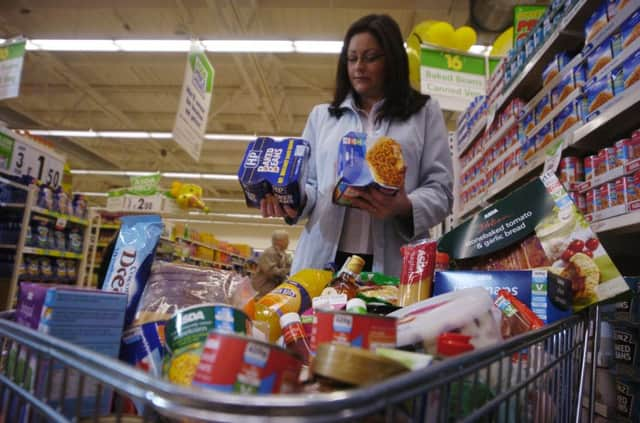Supermarkets tactics to conceal prices revealed


The organisation said stores were still using pricing tactics that confuse shoppers, making it difficult for them to uncover the best deal.
Confusing multi-buy deals are still rife, the group said, despite a recent drive for stores to be more clear in their pricing. Others slap red £1 stickers on products, which make them appear to be on offer, but the £1 is actually the normal amount charged.
Advertisement
Hide AdAdvertisement
Hide AdA survey by the consumer watchdog found that more than two in five shoppers said they had bought something they thought was on offer but turned out not to be, because of a product being placed near a sign offering a deal, but not actually being included.
Other pricing tactics uncovered were products that had, over time, shrunk in size but the price had remained the same, as well as seasonal products such as Easter eggs being put “on offer” as the date of the celebration approached, but only sold at lower prices at a time when few people would want to buy them.
“We’ve uncovered pricing tactics that make shopping for your weekly groceries look like tackling an obstacle course,” said Which? executive director Richard Lloyd.
“With consumers struggling to cope with rising food prices, supermarkets and manufacturers need to make it easier for people to spot the best deal.”
The report found that most of the main supermarkets – including Tesco, Asda and Waitrose – all put red £1 stickers on certain products, many of which were actually priced £1 for the vast majority of the time.
“The price sticker referred to is simply designed to highlight the great everyday value on these items,” said a spokeswoman for Waitrose.
Alice Rickman, Which? shopping expert, said the group had launched a new campaign, Make Special Offers Special, to urge supermarkets to simplify their pricing structures. Last year Which?, backed by the UK government, called for stores to offer a consistent unit price for goods – meaning consumers could more easily compare single and multi-buy purchases.
In 2002, the government published new guidance to stop supermarkets offering confusing multi-buy deals and discounts.
Advertisement
Hide AdAdvertisement
Hide Ad“This builds on our campaign to get consistent unit pricing into supermarkets – the price by weight or volume – so it’s easier to compare,” Ms Rickman said.
“We are continuing to talk to the supermarkets about their offers. We think all special offers should be transparent so that you can easily tell which products are cheapest.”
A spokeswoman for Tesco said: “We work hard to offer great value as we know how important it is that customers trust us on price.”
An Asda spokesperson said: “We would never deliberately mislead customers on price. Many everyday essentials have been price-locked – our aim is to have the lowest prices for the longest.”